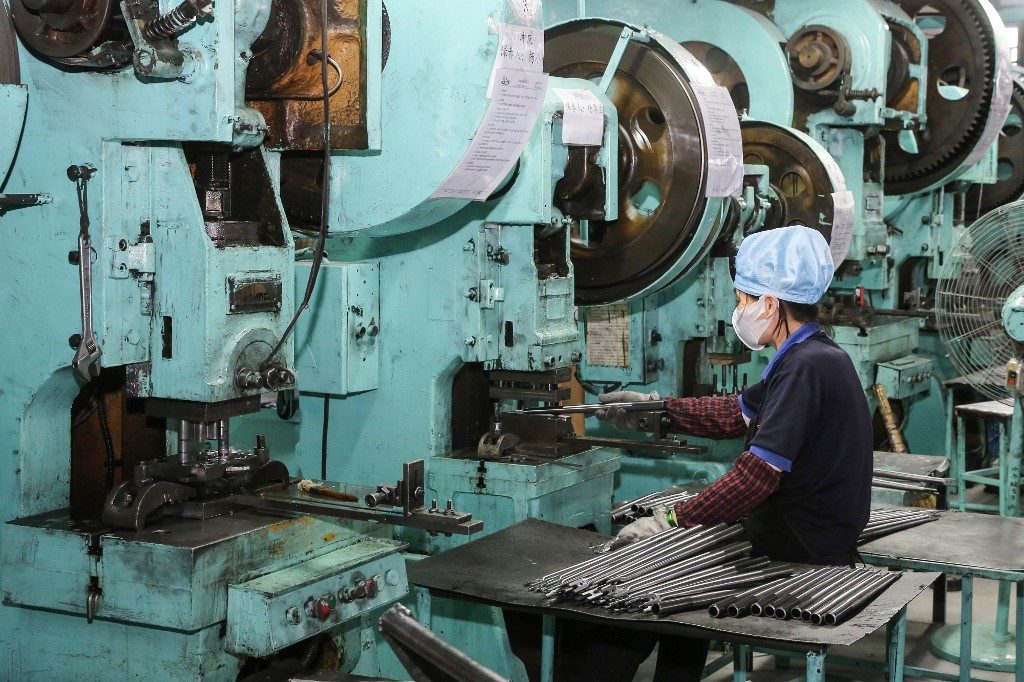SUMMARY
This is AI generated summarization, which may have errors. For context, always refer to the full article.

BEIJING, China – China’s factory-gate prices remained at 4-year lows in May, official data showed on Wednesday, June 10, as the demand shock from the coronavirus continued to take a toll on the world’s second largest economy.
The producer price index (PPI), which measures the cost of goods at the factory gate, deepened its contraction last month, shrinking 3.7% on-year.
Analysts said subdued demand and declining global commodity prices were key factors behind the fall.
The PPI figure was worse than the 3.2% drop expected by analysts in a Bloomberg survey, and was deeper than April’s 3.1% contraction – underscoring the stress faced by manufacturers as China’s economy churns back to life after pandemic lockdowns.
China’s consumer price index (CPI) rose 2.4% in May, said the National Bureau of Statistics, easing from 3.3% a month earlier on falling food prices.
The country has been working to bounce back from a historic contraction in growth in the first 3 months as the coronavirus outbreak brought activity to a near-standstill while authorities worked to curb its spread.
But the march of the virus around the world, hammering the global economy, has depressed demand across many of China’s key trading partners, forcing companies to charge less for their products.
Dong Lijuan, senior statistician at the statistics bureau, said on Wednesday the PPI drop was influenced by a fall in prices in the oil industry and other major commodities.
Another key factor behind the easing of consumer prices is China’s slowing food price inflation, added Dong, with more fresh produce entering the market and an increase in pork supply.
Martin Rasmussen of Capital Economics noted the PPI change was driven by “an across-the-board decline in raw materials, manufactured goods, and consumer goods price inflation.”
Consumer inflation had remained close to 8-year highs in the earlier part of 2020, and pork prices have been soaring after the country’s herds were ravaged by African swine fever that saw millions of pigs culled.
The price of pork – a staple meat in China – rose 81.7% on-year last month, down from a 96.9% rise in April and 116.4% spike in March.
Rasmussen added, “The weakness in price pressures should ease in the coming months, as the ongoing ramp-up in policy stimulus drives a further recovery in activity.”
Core inflation – which excludes food and energy – should stop declining soon as consumer spending strengthens, he said, while a pickup in infrastructure construction looks set to drive a rebound in producer prices, which are highly correlated with commodity prices.
ANZ senior China economist Betty Wang told Agence France-Presse that with core CPI “relatively stable,” China’s central bank may hold off further policy support.
This month, the People’s Bank of China set aside 400 billion yuan ($56 billion) to buy loans from eligible banks, in a bid to boost lending to small businesses hard-hit by the pandemic. – Rappler.com
Add a comment
How does this make you feel?
There are no comments yet. Add your comment to start the conversation.